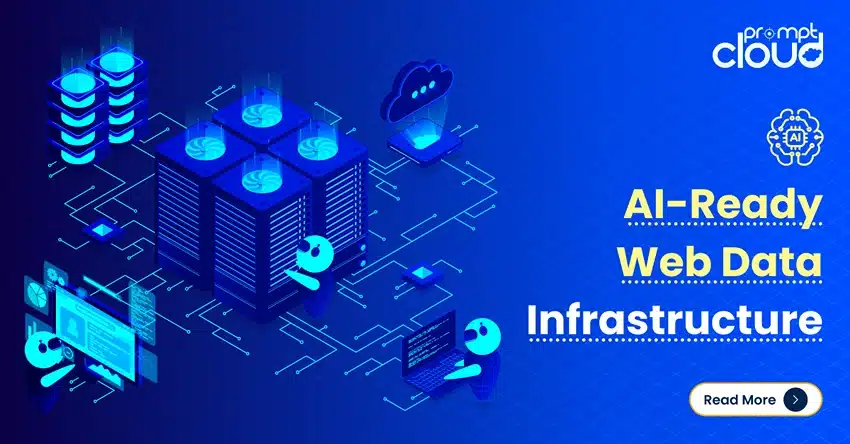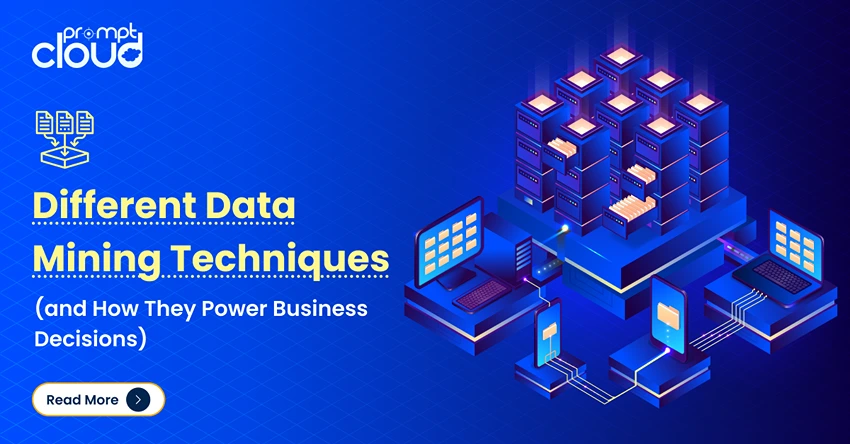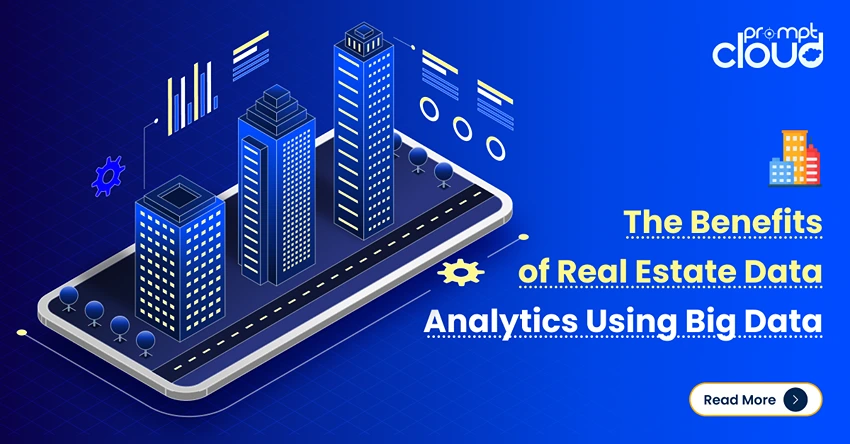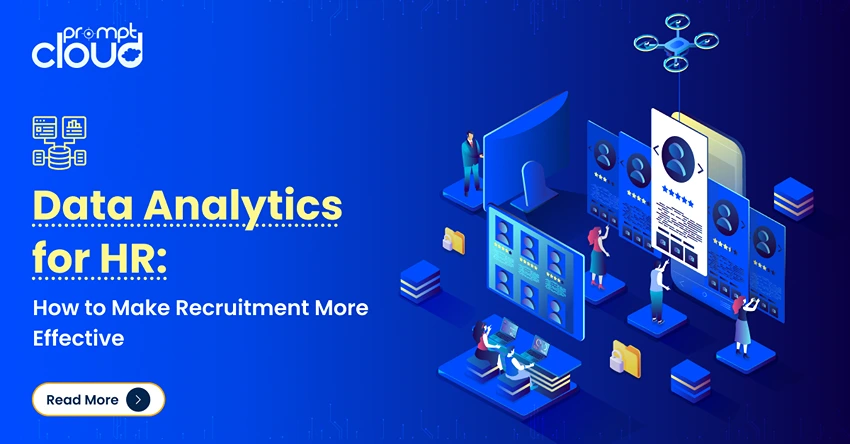
**TL;DR**
Crawling and scraping are often mistaken for the same process, but they play very different roles in web data extraction. Crawling focuses on discovering and indexing web pages, while scraping targets specific information within those pages. In modern data ecosystems, both are used together: crawlers map the web, and scrapers extract the structured data businesses depend on for analytics, pricing, or AI training. This guide breaks down what each does, how they work, and the key differences between crawling vs scraping in real-world data operations.
Introduction
Every major data-driven business from eCommerce giants to financial platforms depends on the continuous flow of online information. Prices change by the minute, new products launch daily, and digital content updates around the clock.
But raw web data doesn’t come neatly packaged. It needs to be discovered, collected, and structured before any analytics, forecasting, or AI model can use it. That’s where two core processes come in: web data crawling and web data scraping.
They often appear in the same sentence (and even in the same pipeline), but they do different things.
Crawling helps you find and index web pages across the internet. Scraping helps you extract the actual data like prices, product details, or reviews from those pages.
When combined, they form the backbone of enterprise-grade data acquisition systems. Whether you’re monitoring competitor prices, aggregating listings, or training machine learning models, understanding the distinction between crawling vs scraping is key to scaling safely and efficiently.
If your team wants real-time product visibility tracking, pricing intelligence or full-scale digital shelf monitoring, PromptCloud can help. Talk to our data experts today and build a scraping pipeline tailored to your e-commerce strategy.
What Is Web Crawling?
Web crawling is the process of systematically navigating the internet to discover, index, and catalog web pages. Crawlers also known as spiders or bots start with a list of seed URLs and then follow hyperlinks recursively to find new pages. Each discovered page is fetched, analyzed, and added to a structured index for later use.
Purpose of Crawling
The goal of web crawling isn’t to extract data, but to map it. Crawlers create a blueprint of what exists online URLs, metadata, and page hierarchies so that other systems (like scrapers or search engines) can retrieve content efficiently later.
Common Use Cases
- Search engine indexing: Googlebot and Bingbot crawl billions of web pages to update their search results.
- Website monitoring: Companies use internal crawlers to track content updates or detect broken links.
- Data discovery: Before scraping, crawlers identify which URLs contain relevant information (like product pages or job listings).
How Crawlers Work
A crawler follows a structured process:
- Starts from a seed list of URLs.
- Sends HTTP requests to each link, analyzing HTML for new links.
- Queues unvisited URLs for future exploration.
- Complies with the website’s robots.txt rules and rate limits.
- Logs metadata such as last crawl date, link structure, and response code.
Enterprise crawlers often include logic for deduplication, politeness, and parallel processing, ensuring large-scale scans don’t overload websites or produce redundant data.
What Is Web Scraping?
Web scraping, in contrast, is the process of extracting structured information from the web pages a crawler has discovered. Instead of mapping or indexing, a scraper focuses on specific elements within HTML such as product prices, titles, job descriptions, or customer reviews and converts them into usable datasets.
Purpose of Scraping
Scraping turns unstructured web content into structured, machine-readable data formats like CSV, JSON, or XML. This allows businesses to analyze information across competitors, track trends, or feed machine learning systems without manual copy-pasting.
Common Use Cases
- E-commerce price tracking: Collecting daily competitor pricing and availability.
- Financial research: Extracting data from investor reports or stock listings.
- Market sentiment analysis: Pulling user reviews and social comments for brand monitoring.
- Job and real estate aggregation: Compiling listings across multiple platforms into unified feeds.
How Scrapers Work
A scraper identifies the HTML tags, CSS selectors, or API endpoints that contain relevant data, and extracts them automatically. Modern scrapers handle:
- Dynamic content: Using headless browsers like Selenium or Playwright.
- Proxy rotation and CAPTCHA handling: To maintain access at scale.
- Schema validation: Ensuring consistent structure across multiple websites.
Where a crawler is the “explorer,” a scraper is the “data miner.” Together, they transform the web from an infinite tangle of pages into precise, structured intelligence that businesses can use immediately.
Crawling vs Scraping: The Key Differences
At first glance, crawling and scraping seem like two sides of the same coin. Both involve automated bots interacting with websites and collecting information. But the objective, scale, and output of each process are entirely different.
Think of it this way:
- Crawling is like scanning every aisle in a library to note which books exist and where they are placed.
- Scraping is like opening a specific book and copying the paragraph you need.
Here’s a breakdown of how these two processes differ across critical dimensions:
| Parameter | Web Crawling | Web Scraping |
| Purpose | Discover and index web pages | Extract structured data from specific web pages |
| Output | List of URLs, metadata, or site maps | Datasets (CSV, JSON, XML) containing actual content |
| Scope | Broad — scans multiple domains and links | Narrow — focuses on defined data points |
| Frequency | Regular, to keep indexes updated | As needed, depending on data freshness |
| Tools/Tech | Crawl agents, spiders, link schedulers | Parsers, APIs, headless browsers |
| Use Cases | Search engines, content monitoring, indexing | Price tracking, market analysis, sentiment analytics |
| Ethical Rules | Must respect robots.txt and crawl delays | Must comply with site ToS and data privacy laws |
| Complexity | Managing scale and deduplication | Handling dynamic pages and extraction accuracy |
In Practice
- A crawler might identify 10,000 new product URLs from an eCommerce site’s sitemap.
- A scraper then visits each of those URLs to collect price, SKU, stock, and review data — transforming it into a usable dataset.
While both can operate independently, they’re far more powerful when combined. Crawlers feed scrapers, and scrapers give meaning to what crawlers discover.
Example: Real-Time Data Workflows
In large-scale systems like PromptCloud’s managed data feeds, crawling acts as the discovery engine — ensuring new pages are found quickly. Scraping acts as the data refinery, extracting high-value insights such as pricing, product specs, or customer sentiment.
Both processes are governed by strong quality control measures like deduplication, freshness tracking, and compliance filters to ensure only relevant, accurate, and ethically collected data reaches the end user.
To see this in action, check out Google Trends Scraper 2025 a real-world example of how structured scraping enables trend forecasting and content planning at scale.
Where Crawling and Scraping Intersect in Business Use Cases
While crawling vs scraping define two separate processes, modern businesses rarely use one without the other. Together, they form a unified data pipeline one that discovers, extracts, and refreshes web information at scale.
Crawlers locate the pages that matter. Scrapers extract the specific data you care about. When paired, they enable continuous, automated access to competitive, customer, and market intelligence.
Here’s how that plays out across industries:
1. Retail and eCommerce: Price, Availability, and Catalog Tracking
Retailers use crawlers to find all relevant product URLs across competitor sites, marketplaces, and category pages. Once those URLs are indexed, scrapers extract details such as:
- Product name, brand, SKU
- Price and discount information
- Stock status and delivery times
This live data supports pricing intelligence, margin optimization, and dynamic promotion management. In fact, eCommerce platforms that integrate continuous crawling and scraping workflows can react to competitor price changes within minutes, not days.
To explore a real-world example of this approach, read our deep dive on Web Scraping for Finance 2025, where similar methods help track stock prices and global economic signals.
2. Financial and Market Intelligence
In the finance sector, datasets are built by combining crawl-driven discovery with scraper-based extraction. For example:
- Crawlers identify new filings, announcements, or stock disclosures on government or investor websites.
- Scrapers then parse the documents to extract structured fields such as company name, market cap, and risk notes that analysts feed into predictive models.
This data convergence allows trading algorithms to detect early signals before traditional data providers catch up.
3. Brand and Sentiment Monitoring
Reputation management teams rely on crawlers to scan review sites, social platforms, and forums for brand mentions. Scrapers then collect sentiment-bearing data reviews, comments, ratings and send it for NLP (Natural Language Processing) analysis.
By continuously blending crawl discovery with scraping extraction, brands gain a real-time pulse on perception shifts, emerging complaints, or viral trends.
This is the exact framework we discussed in How to Use Web Scraping for Online Reputation, where structured review and social data powers smarter reputation dashboards.
4. Research, Compliance, and Policy Tracking
Academic and policy research organizations use web crawlers to monitor public databases, court rulings, or scientific repositories for new updates. Scrapers then extract the relevant metadata author names, case numbers, regulatory tags to maintain searchable archives or compliance libraries.
This hybrid approach is increasingly common in sectors like pharma, law, and ESG (Environmental, Social, and Governance) monitoring, where real-time data integrity is a must.
5. AI and Machine Learning Model Training
Large-scale AI projects depend on web data pipelines that combine both crawling and scraping.
Crawlers handle discovery fetching diverse content sources (text, image, audio) while scrapers extract labeled samples used to train machine learning models.
Without continuous crawling, your dataset becomes stale. Without precise scraping, your model becomes inaccurate. Together, they ensure the data foundation of every intelligent system remains fresh and reliable.
Why This Combination Matters
The synergy between crawling and scraping is what turns the web into a live data ecosystem. One without the other either collects too much irrelevant information (crawl-only) or misses context entirely (scrape-only). Used together, they allow businesses to move from reactive analytics to proactive decision-making a shift that defines modern data strategy in 2025.
Ethical, Legal, and Technical Best Practices for Crawling and Scraping
As crawling and scraping have evolved into essential components of business intelligence, so have the conversations about ethics, legality, and responsible automation. The distinction between what can be done and what should be done is critical for companies that rely on large-scale web data.
At PromptCloud, compliance-first data acquisition isn’t an afterthought, it’s part of the engineering design. Here’s how responsible web data collection is maintained.
1. Respect Robots.txt and Terms of Service
The robots.txt file serves as the first handshake between crawlers and websites. It tells bots which sections of a site are open for indexing and which are off-limits. Following these directives ensures respectful crawling and prevents potential server strain or legal disputes.
Similarly, a website’s Terms of Service (ToS) often define acceptable usage boundaries for automated access. Ignoring these can lead to IP blocks or litigation.
For a foundational overview of robots.txt and ethical crawling, see Wikipedia: Web scraping.
2. Avoid Overloading Servers
Aggressive crawling — hitting the same domain too frequently — can slow or crash smaller websites. That’s why professional crawlers use rate-limiting, politeness delays, and queue-based schedulers to balance efficiency with courtesy. At enterprise scale, this is essential for maintaining relationships with data partners and preventing service disruptions.
3. Manage Deduplication and Data Freshness
Deduplication ensures you aren’t repeatedly collecting identical content. This saves bandwidth, reduces data processing costs, and avoids inflating datasets with redundant entries. In high-frequency crawling, deduplication systems flag already-seen URLs or hash signatures to maintain dataset integrity. At the same time, freshness monitoring ensures the data stays relevant, revisiting pages at intelligent intervals rather than blindly re-fetching everything.
4. Handle Personally Identifiable Information (PII) with Care
While much of the web is public, privacy laws such as GDPR and CCPA restrict how personal information can be collected and used. Ethical scrapers anonymize, pseudonymize, or exclude PII to maintain compliance. The focus should always remain on aggregated insights, not individual data.
5. Use Secure and Transparent Data Pipelines
Compliance isn’t just about access, it’s about control. Modern scraping architectures use encrypted data pipelines, access logs, and consent-based APIs where possible. Clients should also be able to audit and trace how each dataset was built, a level of transparency that distinguishes enterprise-grade providers from ad hoc scripts.
6. Stay Updated with Jurisdictional Changes
Web data laws differ across regions and continue to evolve. A compliance strategy that’s valid in one geography might not apply in another. Partnering with a managed provider like PromptCloud helps mitigate these risks as regulatory tracking, permission management, and ethical enforcement are handled at the infrastructure level.
7. The Golden Rule: Data with Integrity
Ultimately, ethical crawling and scraping aren’t about restrictions; they’re about sustainability. When automation respects site structure, traffic limits, and privacy boundaries, everyone wins data providers, users, and businesses that depend on consistent, high-quality web data.
Conclusion
Understanding the difference between web data crawling vs web data scraping is more than a matter of terminology — it’s about knowing how the web’s data ecosystem really works.
Crawling is exploration. It builds the index, finds the URLs, and maps the digital landscape. Scraping is extraction. It retrieves specific, valuable information and turns it into a structured dataset.
When they work together, they form a seamless, intelligent loop of discovery and delivery powering everything from AI model training to real-time pricing intelligence.
At scale, the distinction matters. Businesses that rely solely on scraping risk missing updates, while those that crawl without extracting data can’t generate insights. The sweet spot lies in combining both governed by compliance, guided by precision, and automated for speed.
As we move deeper into 2025, this combination defines how successful companies collect intelligence and act on it faster than competitors. Crawling and scraping are no longer niche engineering terms; they’re the unseen engines driving data visibility, automation, and decision-making in the modern enterprise.
If your team wants real-time product visibility tracking, pricing intelligence or full-scale digital shelf monitoring, PromptCloud can help. Talk to our data experts today and build a scraping pipeline tailored to your e-commerce strategy.
FAQs
1. What is the main difference between crawling and scraping?
Crawling focuses on discovering and indexing web pages, while scraping extracts specific data points from those pages. Crawling builds a roadmap; scraping gathers the actual content.
2. Can you perform scraping without crawling?
Yes — if you already know the exact URLs you want to extract data from. However, most large-scale systems use crawling first to locate target pages efficiently.
3. Is web scraping legal?
Web scraping is legal when it respects site Terms of Service, robots.txt guidelines, and privacy laws such as GDPR. Always focus on public, non-personal data and ethical access practices.
4. Why is deduplication important in web crawling?
Deduplication prevents repeated collection of the same data, saving bandwidth, storage, and processing power while ensuring cleaner datasets and faster delivery.
5. How does PromptCloud handle large-scale crawling and scraping?
PromptCloud uses distributed crawlers, smart schedulers, and anti-blocking systems to collect, clean, and deliver structured web data in real time — across multiple industries and formats, all while maintaining compliance and ethical standards.
What are the specific challenges in scaling data crawling and scraping operations?
Scaling data crawling and scraping operations presents unique challenges, including managing bandwidth to avoid overloading servers, handling IP bans and rate limiting through proxy rotation, and dealing with the dynamic nature of web content that requires constant updates to scraping scripts. Efficient scaling also involves sophisticated data storage solutions to handle the large volumes of data collected and implementing robust error-handing mechanisms to manage failed requests or parse errors.
Can data scraping and crawling techniques be integrated into a single workflow, and if so, how?
Integrating data scraping and crawling into a single workflow is possible and can be highly effective for comprehensive data collection strategies. This integration involves using crawling to systematically browse through web pages to identify relevant information and then applying scraping techniques to extract specific data from these pages. Such a workflow can benefit from automated processes that determine when to scrape data based on crawling results, using a combination of both methods to navigate through and extract data from complex website structures efficiently. This approach optimizes data collection efforts by leveraging the strengths of both techniques for targeted and extensive data gathering.
What is a crawl data?
Crawl data refers to the information that has been collected by systematically browsing the internet and extracting information from websites. This process is done using automated programs known as web crawlers, spiders, or bots. These bots navigate the web, following links from page to page, and gather data from websites according to specified criteria. The collected data can then be used for various purposes, such as web indexing by search engines, data analysis for market research, content aggregation for news or research, and more. In the context of PromptCloud or similar data-as-a-service providers, crawl data typically signifies the raw, structured, or semi-structured data extracted from targeted web sources for clients, tailored to their specific data needs and use cases.
What is the difference between crawling and scraping data?
Crawling and scraping are related but distinct processes involved in gathering data from the web. Crawling is about finding and indexing web pages, while scraping is about extracting specific data from those pages. Crawling provides the roadmap of what’s on the web, which can be used to perform targeted scraping operations on specific sites to gather detailed information. Here’s how they differ:
Web Crawling:
- Purpose: The primary goal of web crawling is to index the content of websites across the internet. Search engines like Google use crawlers (also known as spiders or bots) to discover and index web pages.
Web Scraping:
Purpose: Web scraping is focused on extracting specific data from web pages. It is used to gather particular information from websites, such as product prices, stock levels, articles, and more.
Is it legal to crawl data?
The legality of crawling data from the web can vary significantly based on several factors, including the methods used for crawling, the nature of the data being crawled, the source website’s terms of service, and the jurisdiction under which the crawling activity occurs. Here are some general considerations:
Many websites outline conditions for using their services, including whether or not automated crawling is permitted, in their Terms of Service (ToS) or robots.txt file. Adhering to these guidelines is crucial to ensure legal compliance. The intended use of the crawled data can also affect the legality of crawling. Using data for personal, non-commercial purposes is generally more acceptable than using it for commercial gain, especially if the latter competes with the source’s business. Data protection and privacy laws, such as the General Data Protection Regulation (GDPR) in Europe, impose strict rules on the collection and use of personal data. Crawling data that includes personal information without consent can lead to legal issues.Purpose: Web scraping is focused on extracting specific data from web pages. It is used to gather particular information from websites, such as product prices, stock levels, articles, and more.
How does crawl work?
The process of web crawling involves several steps, each designed to systematically discover and index the content of the web. Here’s an overview of how crawling works:
The web is dynamic, with new content being added and old content being changed or removed constantly. Crawlers often revisit sites periodically to update their databases with the latest content. This process is known as incremental crawling.
The crawl begins with a list of initial URLs known as “seed” URLs. These seeds serve as the starting points for the crawl. They are often chosen because they are known to be rich in links and content, such as popular website homepages.
The crawler, also known as a spider or bot, visits the seed URLs and requests the web pages from the server, just like a browser does when a user visits a site. The server responds by sending the HTML content of the page to the crawler.
Once a page is fetched, the crawler parses the HTML content to extract links to other pages. This parsing process also allows the crawler to identify and categorize the content of the page, such as text, images, and other media.
The links discovered during the parsing step are added to a list of URLs to visit next. This list is often managed in a queue, with new URLs being added and visited URLs being removed or marked as visited to prevent the crawler from revisiting the same pages.
Before fetching a new page, the crawler checks the website’s robots.txt file. This file, located at the root of a website, specifies which parts of the site should not be accessed by crawlers. Ethical crawlers respect these rules to avoid overloading websites and to respect the wishes of website owners.
Crawlers manage the rate at which they visit pages (crawl rate) to avoid overwhelming web servers. They also decide how deep into a site’s link hierarchy to go (crawl depth), which can depend on the crawler’s purpose and the resources available.
The content and data extracted during the crawl are indexed and stored in databases. This information can then be used for various purposes, such as powering search engines, analyzing web content, or feeding into machine learning models.
What does crawling of data mean?
Crawling of data refers to the automated process where a program, known as a web crawler, spider, or bot, systematically browses the World Wide Web in order to collect data from websites. This process involves the crawler starting from a set of initial web pages (seed URLs) and using the links found in these pages to discover new pages, fetching their content, and continuing this pattern to traverse the web. The primary aim is to index the content of websites, allowing for the data to be processed and organized in a way that it can be easily searched and retrieved, typically for use in web search engines, data analysis, market research, and various other applications.
What does data scraping do?
Data scraping automates the extraction of information from websites. This process involves using software or scripts to access the internet, retrieve data from web pages, and then process it for various purposes. Instead of manually copying and pasting information from websites, data scraping tools automatically navigate through web pages, identify relevant data based on predefined criteria, and collect it much more efficiently. Web pages are designed for human readers, not for automated processing. Data scraping helps convert the unstructured data displayed on websites (like text and images) into a structured format (such as CSV, JSON, or XML files) that can be easily stored, searched, and analyzed.
Data scraping tools can collect information from many pages or sites quickly, allowing for the aggregation of large volumes of data that would be impractical to gather manually. Some data scraping setups are designed to collect information in real-time, enabling users to access up-to-date data. This is particularly useful for monitoring dynamic information, such as stock prices, weather conditions, or social media trends. By automating the tedious and time-consuming task of data collection, data scraping allows individuals and organizations to focus their efforts on analyzing and using the data rather than on gathering it.
Is it legal to scrape data?
The legality of data scraping depends on several factors, including the jurisdiction, the nature of the data being scraped, how the data is used, and the specific terms of service of the website being scraped. There isn’t a one-size-fits-all answer, as laws and regulations vary significantly across different countries and regions.
Given these complexities, it’s advisable to consult with legal experts familiar with the relevant laws and regulations in your jurisdiction before engaging in data scraping, especially if you’re scraping at scale or dealing with potentially sensitive or personal data. Compliance with website terms of service, copyright laws, and data protection regulations is crucial to ensure that scraping activities remain legal and ethical.
Is data scraping easy to learn?
Data scraping can be relatively easy to learn for those with some background in programming and web technologies, though the ease of learning can vary widely depending on the complexity of the tasks you aim to perform and the tools you choose to use. Having a foundational understanding of programming concepts and familiarity with at least one programming language (commonly Python or JavaScript for web scraping) is crucial. Python, in particular, is popular for data scraping due to its readability and the powerful libraries available (like Beautiful Soup and Scrapy), which simplify the process.
Understanding how web pages are structured (HTML) and how client-server communication works (HTTP/HTTPS) are essential for effective scraping. Knowing how to identify the data you need within the structure of a web page (using tools like web developer tools in browsers) can make learning data scraping much more manageable. There are many libraries, frameworks, and tools designed to facilitate data scraping, ranging from simple browser extensions for non-programmers to sophisticated libraries for developers. The availability of these resources makes it easier to start learning and executing scraping projects.
Data Scraping Meaning
Data scraping, also known as web scraping, refers to the process of extracting data from websites. This technique involves using software or automated scripts to access the internet, navigate web pages, and systematically collect information from those pages. The extracted data can then be processed, analyzed, stored, or used in various applications.
What is database crawling?
Database crawling is the process of systematically scanning and extracting information from a database. This technique is used to gather, index, and structure data stored in databases to make it accessible for various applications, such as search engines, data analysis, and business intelligence.
Applications of Database Crawling:
Data Aggregation: Combines data from multiple databases, providing a unified view for analysis.
Search Engines: Enhances the ability of search engines to provide accurate and relevant results by indexing vast amounts of data.
Market Research: Helps in gathering competitive intelligence by analyzing data from various sources.
Business Intelligence: Facilitates data-driven decision-making by providing access to structured and organized data.
What is the difference between indexing and crawling?
Crawling is the process by which search engines or other data collection tools systematically browse the web or databases to gather and download information from various sources. Indexing is the process of organizing and storing the data collected by crawlers in a structured format that allows for efficient retrieval and search.
Does Google crawl databases?
Google does not typically crawl databases directly. Instead, it crawls web pages that can include data extracted from databases, making this information accessible via web links. For databases, structured data can be made discoverable by using proper SEO techniques, structured data markup, and allowing public access through web pages.



















